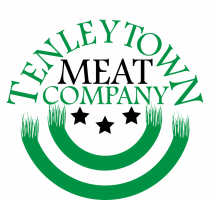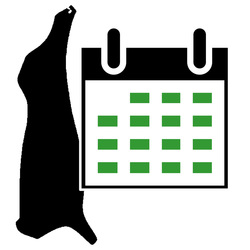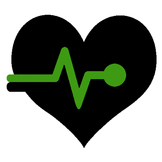More about our Meat
100% Grassfed, Grass Finished, and Pasture Raised
Rotationally grazing animals through lush pastures mimics the natural cycles between grasslands and large grazing herbivores. These cycles improve the soil by cycling nutrients, spreading seeds, and turning sunlight and carbon-dioxide into plant matter. The established perennial roots act as elevators to bring nutrients to the surface, and work to absorb water when rains come. This all means healthier and more productive soil of a significantly higher quality, leading to more flood control, less erosion, and more growth. Compare this with the normal life of commodity beef - unmanaged grazing straight to fattening or "finishing" in a feedlot on an unnatural diet of grain.
|
No Hormones or Antibiotics
Most cattle in the US live out their last several months in concentrated animal feeding operations (CAFOs) where they are fed a diet to minimize the time it takes to get them “beefed up”. This diet includes a steady flow of hormones and subtheraputic antibiotics to boost growth and to keep them healthy (enough to keep gaining weight). Here's a great resource to start looking into the topic. We support our farmers in treating sick animals with antibiotics when needed but nothing more.
|
Dry Aged 2 Weeks
Since the advent of the vacuum sealed plastic bag, the debate of whether to wet-age or dry-age beef has been present. Aging in and of itself is important as it enables natural enzymes to break down connective tissue in the muscles, making the beef more tender. But which is better? With our dry-aging process, moisture is removed from the beef, concentrating the beefy flavors and enabling consumers to pay for meat, not blood and water. Here is a good article if you’d like to read more
|
Local to DC
The movement towards smaller and more accountable local economies, and the reestablishment of local food systems, has as much to do with environmental factors as it does human and economic forces. Supporting small and medium sized farms close to the District will help keep resources close to home instead of concentrating the money and power of industrial food operations even more.
|
Health Benefits
|
Guide to Bulk Buying
25 lbs serves 2 people over 4 months using 1 cubic foot of freezer space
25 lbs of meat takes up about 25% of a small freezer
Our average customer eats 3 pounds per month, about 2 6-ounce servings per week
Meat that is vacuum sealed and flash frozen retains quality for 1 year and is safe indefinitely
We suggest placing your first bulk order based on the above averages
25 lbs of meat takes up about 25% of a small freezer
Our average customer eats 3 pounds per month, about 2 6-ounce servings per week
Meat that is vacuum sealed and flash frozen retains quality for 1 year and is safe indefinitely
We suggest placing your first bulk order based on the above averages








